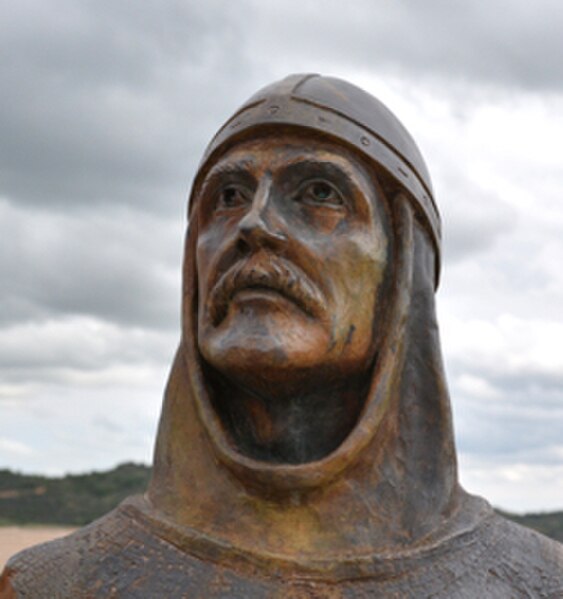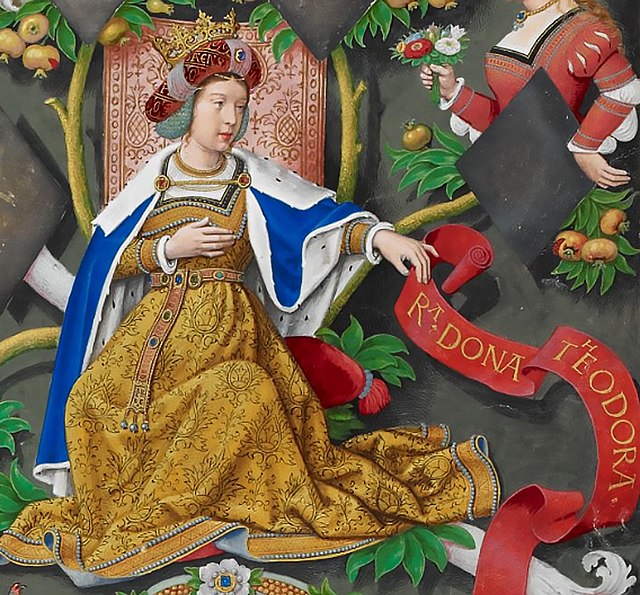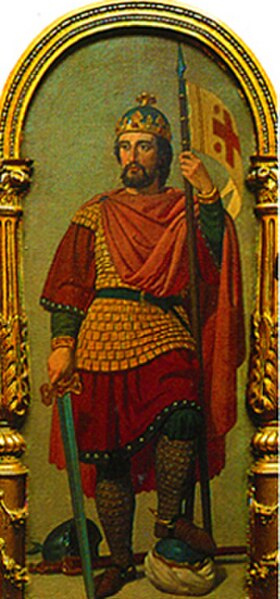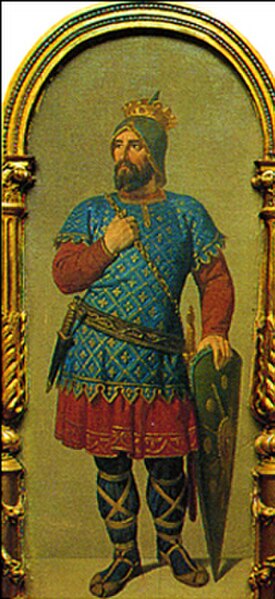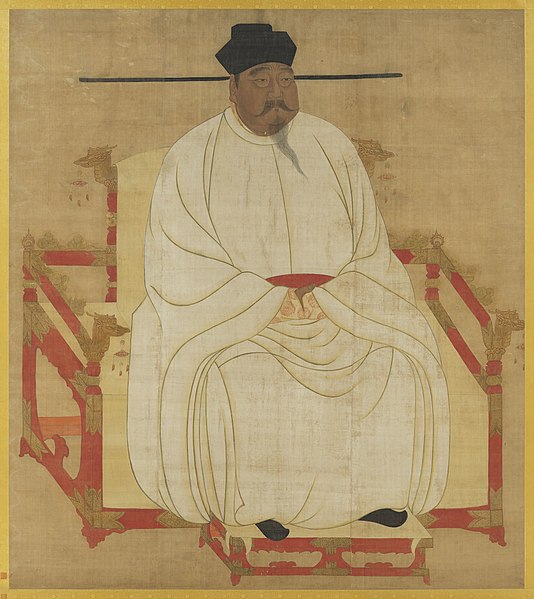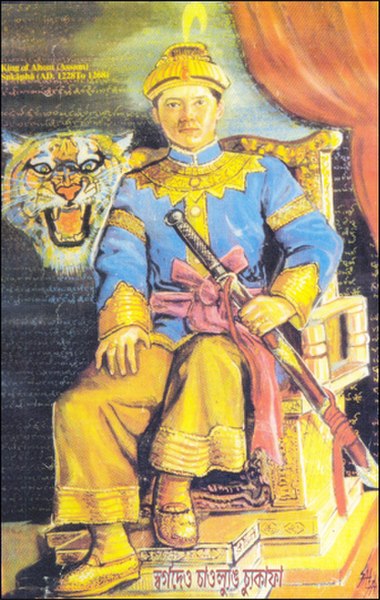The Jiménez dynasty, alternatively called the Jimena, the Sancha, the Banu Sancho, the Abarca or the Banu Abarca, was a medieval ruling family which, beginning in the 9th century, eventually grew to control the royal houses of several kingdoms on the Iberian Peninsula during the 11th and 12th centuries, namely the Kingdoms of Navarre, Aragon, Castile, León and Galicia as well as of other territories in the South of France. The family played a major role in the Reconquista, expanding the territory under the direct control of the Christian states as well as subjecting neighboring Muslim taifas to vassalage. Each of the Jiménez royal lines ultimately went extinct in the male line in the 12th or 13th century.
Image: Sancho Garcés I de Pamplona
Image: Toda Aznares The Portuguese Genealogy (Genealogia dos Reis de Portugal)
Image: Garcia Sanchez I
Image: Sancho II Abarca
A dynasty is a sequence of rulers from the same family, usually in the context of a monarchical system, but sometimes also appearing in republics. A dynasty may also be referred to as a "house", "family" or "clan", among others.
Karikala, the Tamil King of Early Cholas, who built the ancient Kallanai Dam.
Zhao Kuangyin (Emperor Taizu of Song) was the founder of the Song dynasty in China.
Zhu Yuanzhang (Hongwu Emperor) was the founder of the Ming dynasty in China.
Sukaphaa was the first King of the Ahom dynasty in Assam, India.

